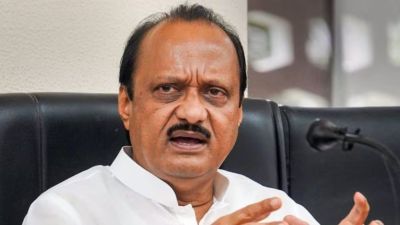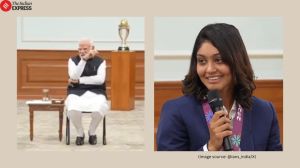Stay updated with the latest - Click here to follow us on Instagram
August 1 deadline is August 1 deadline, says Donald Trump on tariffs
When announcing the August 1 deadline early in July, he said the date was “firm, but not 100% firm.”
 Trump had in April set the tariff on Indian goods imported into the US at 26 per cent on April 2, before pausing his so-called “reciprocal” levies.
Trump had in April set the tariff on Indian goods imported into the US at 26 per cent on April 2, before pausing his so-called “reciprocal” levies. US President Donald Trump is sticking firmly to his deadline for imposing tariffs on countries that fail to strike new trade deals with his administration.
“THE AUGUST FIRST DEADLINE IS THE AUGUST FIRST DEADLINE – IT STANDS STRONG, AND WILL NOT BE EXTENDED,” he declared in a Truth Social post on Tuesday. “A BIG DAY FOR AMERICA!!!”
When announcing the Aug. 1 deadline early in July, he said the date was “firm, but not 100% firm.”
In early April, Trump announced that the US would implement a blanket 10 per cent tariff on imports from nearly every country, alongside higher targeted duties of up to 50 per cent on goods from dozens of nations. The announcement sparked widespread concern among global leaders and rattled investors, prompting Trump to pause the steeper tariffs for 90 days — a delay that was initially set to expire on July 9.
Although Trump said he had “no plans to extend that deadline,” he ultimately signed an executive order just two days before the cutoff, pushing the new start date to August 1.
In the lead-up to the revised deadline, Trump sent formal letters to more than two dozen world leaders, outlining the new tariff rates their countries’ exports would face beginning in August. Most of the figures mirrored the April 2 rates, derived from a controversial formula that many economists had criticised — but several countries saw dramatic increases.
Brazil, for example, saw its tariff rate jump from 10 per cent to 50 per cent, a move Trump justified in a letter citing “the country’s treatment of its former president Jair Bolsonaro.”
Trump also confirmed in separate letters that Canadian goods would be hit with a 35 per cent tariff, while Mexico would face a 30 per cent levy on its exports to the US.
On Monday, Trump hinted at further hikes, saying he may raise the baseline global tariff rate to “around 15 per cent or 20 per cent.”
While the administration argues that the tariffs could generate revenue and strengthen the US’s hand in trade talks, critics note that it is US importers — not foreign governments — who pay the duties. Still, the White House insists the pressure will be effective.
Treasury Secretary Scott Bessent said Tuesday, “I would think that it’s not the end of the world if these snapback tariffs are on for anywhere from a few days to a few weeks, as long as the countries are moving forward and trying to negotiate in good faith.”
Some nations, including Japan and members of the European Union, have already secured lower US tariff rates through preliminary trade deals ahead of Friday’s deadline.





- 01
- 02
- 03
- 04
- 05


























